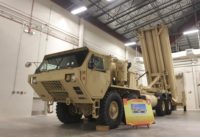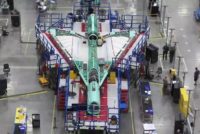BETHESDA, MD—Lockheed Martin Corp. is implementing augmented reality (AR) on its factory floor and working with software developer Scope AR to develop how-to manuals that include animations for assembling spacecraft components. The partners say the collaboration has reduced the time required to interpret assembly instructions by 95 percent, overall training by 85 percent reduction and boosted productivity by more than 40 percent.
Lockheed first implemented AR technology in 2017 within its space division, which is currently building the NASA’s Orion spacecraft. Shelley Peterson, Lockheed’s augmented technology project leader, says AR tools are being used to assembled various Orion components, including the skeletal framework of the spacecraft’s titanium heat shield that must withstand re-entry temperatures as high as 5,000 F.
San Francisco-based Scope AR’s tools also have been used for spacecraft components like cable assemblies and instrument panels, as well as the forward bay where the Orion crew seat module is situated. AR technology is used, for example, to develop the work instructions for drilling and torqueing steps.
Peterson also notes that technologies like Scope AR’s software and Microsoft’s Hololens “mixed reality” tool have helped accelerate the interpretation and presentation of workflow data ranging from assembly, manufacturing, test and maintenance steps. That translates into time savings and reductions in touch labor for the narrow tolerances required for fasteners, transducers, accelerometers and other spacecraft components.
Lockheed is using AR to guide technicians through tasks. In one example, the company's space unit has realized a roughly $38 savings per fastener. This is huge savings for an aerospace manufacturer that buys more than 2 million fasteners a year.
The company says AR allows it to create workflows more rapidly than traditional methods, although existing design data can be used to supplement AR-based work instructions. AR software also can be used to add part identifiers or color coding of parts. Assembly steps can then be animated.





